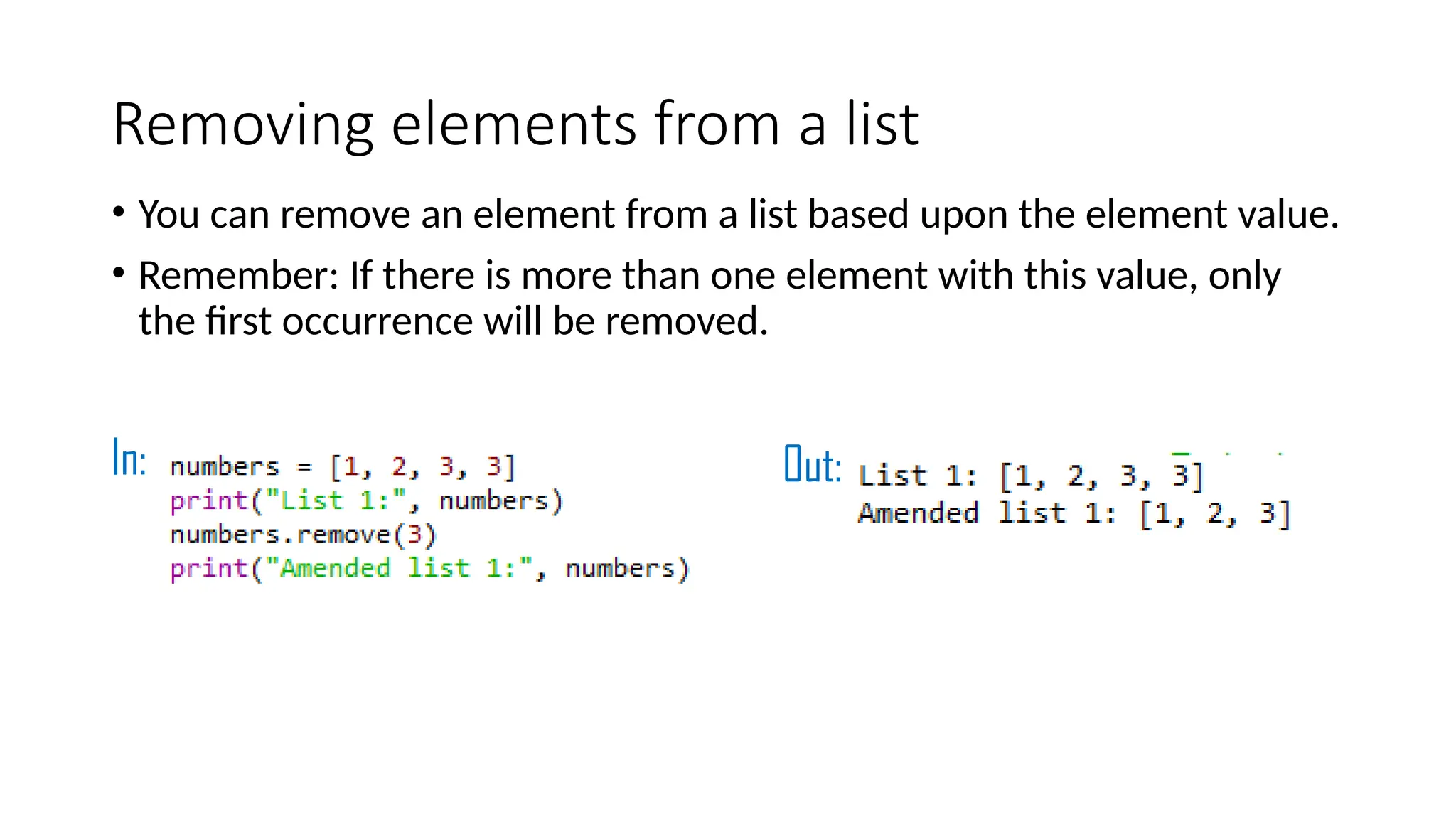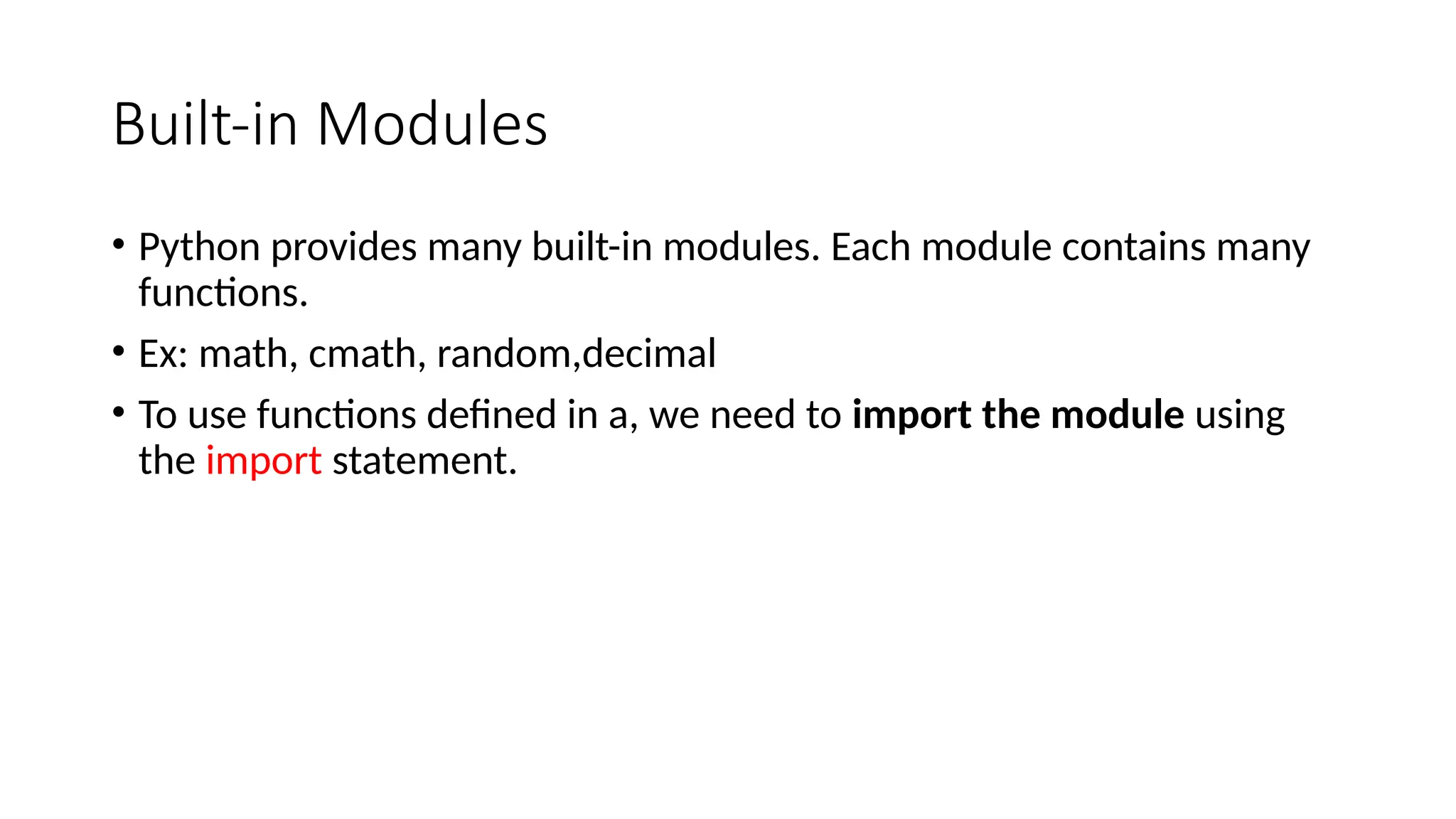This document serves as an introductory guide to Python programming, detailing its interpretive nature and contrasting it with compiled languages. It covers Python's operators, variable types, data structures, and built-in functions, along with their usage and advantages. Additionally, it highlights the flexibility of Python as a language and provides several coding examples for clarification.




















![Variable types
• Integer (int)
• Float (float)
• String (str)
• Boolean (bool)
• Complex (complex)
• […]
• User defined (classes)
• A variable is assigned using the = operator; i.e:
In: Out:
• Create an integer, float, and string variable.
• Print these to the screen.
• Play around using different variable names,
etc.
• The print() function is used to print something
to the screen.](https://image.slidesharecdn.com/introductiontopythonoperatorsdatatypes-250122121941-f40c6be9/75/Introduction_to_Python_operators_datatypes-pptx-21-2048.jpg)











![Lists
• Lists are essentially containers of
arbitrary type.
• They are probably the container
that you will use most frequently.
• The elements of a list can be of
different types.
• The difference between tuples
and lists is in performance; it is
much faster to ‘grab’ an element
stored in a tuple, but lists are
much more versatile.
• Note that lists are denoted by []
and not the () used by tuples.
In:
Out:
• Create a list and populate it with
some elements.](https://image.slidesharecdn.com/introductiontopythonoperatorsdatatypes-250122121941-f40c6be9/75/Introduction_to_Python_operators_datatypes-pptx-33-2048.jpg)







![Some common built-in functions for numbers
• abs(x), pow(x,y), min(x1,x2,x3…),max(x1,x2,x3..)
• divmod(x,y),round(x,[n]),bin(x),oct(x),hex(x)
• Ex:
• a=abs(-3)
print(a)
3
• print(min(10,20,30))
10
• print(max(10,20,30))
30
• print(hex(8))
0x8
• print(bin(8))
0b1000
• print(oct(8))
0o10](https://image.slidesharecdn.com/introductiontopythonoperatorsdatatypes-250122121941-f40c6be9/75/Introduction_to_Python_operators_datatypes-pptx-41-2048.jpg)




